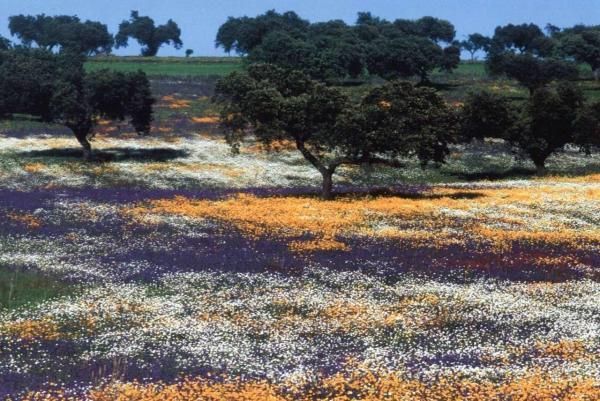Biodiversidad, Ecología y Evolución
Departamento


Universidade de Santiago de Compostela
Santiago de Compostela, EspañaPublicaciones en colaboración con investigadores/as de Universidade de Santiago de Compostela (41)
2024
-
Modelling the spatial risk of malaria through probability distribution of Anopheles maculipennis s.l. and imported cases
Emerging Microbes and Infections, Vol. 13, Núm. 1
-
Positive feedbacks and alternative stable states in forest leaf types
Nature Communications, Vol. 15, Núm. 1
2023
-
A horizon scan exercise for aquatic invasive alien species in Iberian inland waters
Science of the Total Environment, Vol. 869
-
Corrigendum to ‘A horizon scan exercise for aquatic invasive alien species in Iberian inland waters’ Sci. Total Environ.869 (2023) 161798 (Science of the Total Environment (2023) 869, (S0048969723004138), (10.1016/j.scitotenv.2023.161798))
Science of the Total Environment
-
Cómo informar y sensibilizar sobre las especies invasoras
Quercus, pp. 28-35
-
Plant size, latitude, and phylogeny explain within-population variability in herbivory
Science (New York, N.Y.), Vol. 382, Núm. 6671, pp. 679-683
-
Plant size, latitude, and phylogeny explain within-population variability in herbivory
Dryad
2022
-
Bee Trypanosomatids: First Steps in the Analysis of the Genetic Variation and Population Structure of Lotmaria passim, Crithidia bombi and Crithidia mellificae
Microbial Ecology, Vol. 84, Núm. 3, pp. 856-867
2021
-
Wide diversity of parasites in Bombus terrestris (Linnaeus, 1758) revealed by a high-throughput sequencing approach
Environmental Microbiology, Vol. 23, Núm. 1, pp. 478-483
2020
-
Determinants of the current and future distribution of the West Nile virus mosquito vector Culex pipiens in Spain
Environmental Research, Vol. 188
-
Predicting haplogroups using a versatile machine learning program (PredYMaLe) on a new mutationally balanced 32 Y-STR multiplex (CombYplex): Unlocking the full potential of the human STR mutation rate spectrum to estimate forensic parameters
Forensic Science International: Genetics, Vol. 48
-
The toxic unit approach as a risk indicator in honey bees surveillance programmes: A case of study in Apis mellifera iberiensis
Science of the Total Environment, Vol. 698
2018
-
A new multiplex PCR protocol to detect mixed trypanosomatid infections in species of Apis and Bombus
Journal of Invertebrate Pathology, Vol. 154, pp. 37-41
-
Vertical structure of Erica umbellata, a representative species of European Ibero-Atlantic dry heaths
Plant Biosystems, Vol. 152, Núm. 1, pp. 110-119
2015
-
Living on the edge: Timing of Rand Flora disjunctions congruent with ongoing aridification in Africa
Frontiers in Genetics, Vol. 6, Núm. MAY
2012
-
Dispersal ability modulates the strength of the latitudinal richness gradient in European beetles
Global Ecology and Biogeography, Vol. 21, Núm. 11, pp. 1106-1113
-
Habitat selection by European badgers in Mediterranean semi-arid ecosystems
Journal of Arid Environments, Vol. 76, Núm. 1, pp. 43-48
-
Postnatal ontogenesis of the tibia. Implications for age and sex estimation
Forensic Science International, Vol. 214, Núm. 1-3, pp. 207.e1-207.e11
2010
-
Assessing alpha and beta taxonomy in eupelmid wasps: Determinants of the probability of describing good species and synonyms
Journal of Zoological Systematics and Evolutionary Research, Vol. 48, Núm. 1, pp. 40-49
-
Global estimation of invasion risk zones for the western corn rootworm Diabrotica virgifera virgifera: Integrating distribution models and physiological thresholds to assess climatic favourability
Journal of Applied Ecology, Vol. 47, Núm. 5, pp. 1026-1035